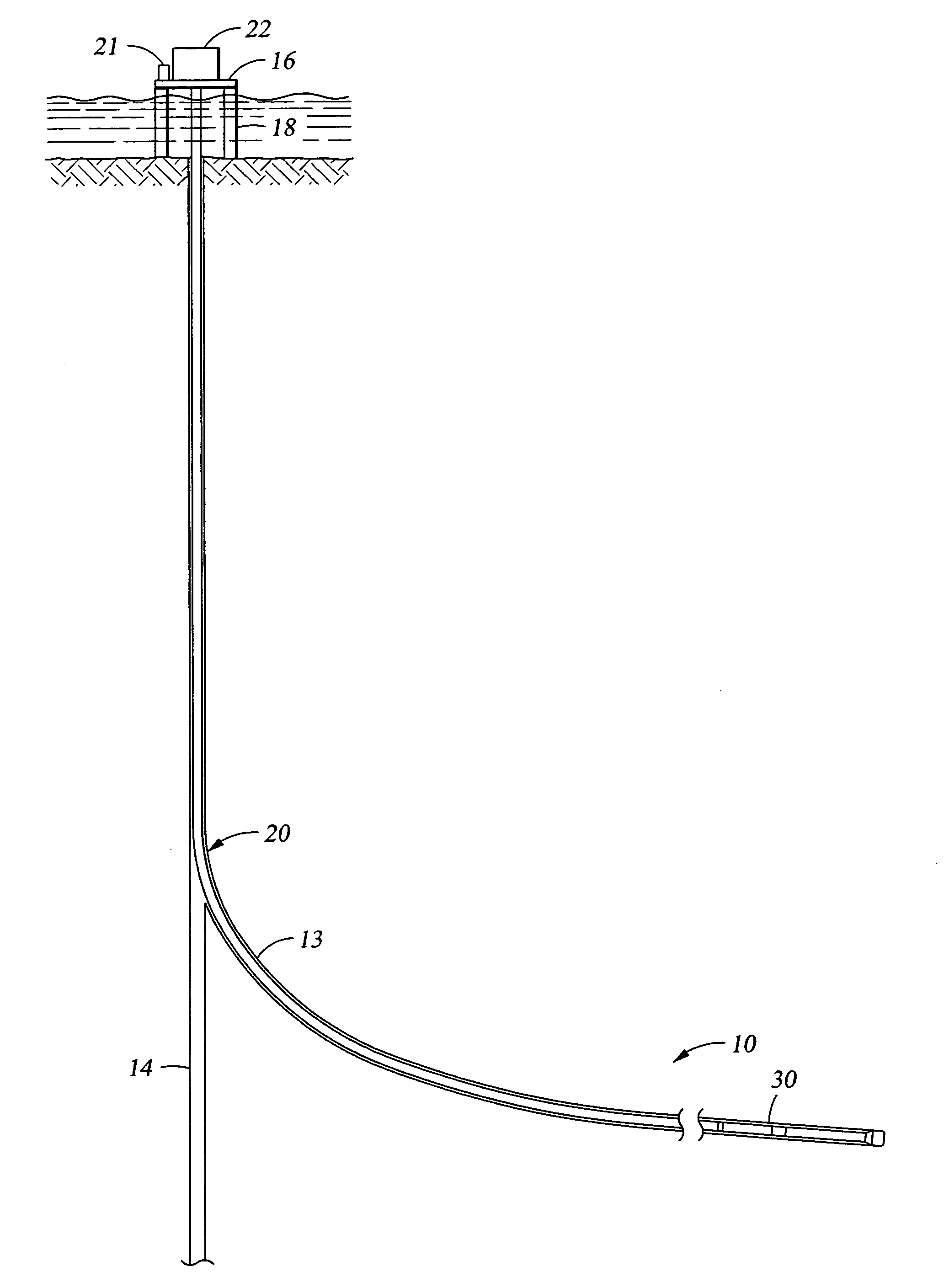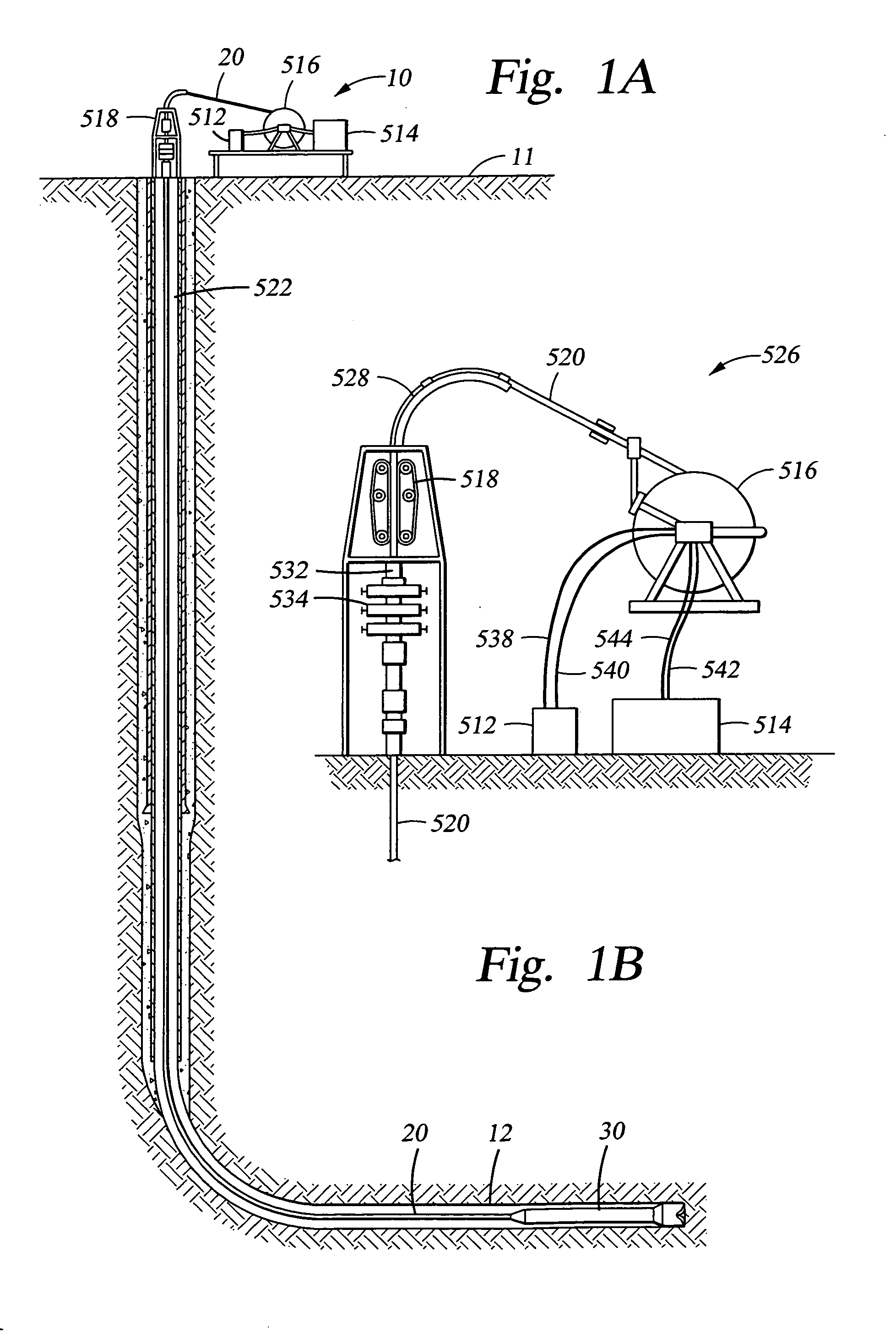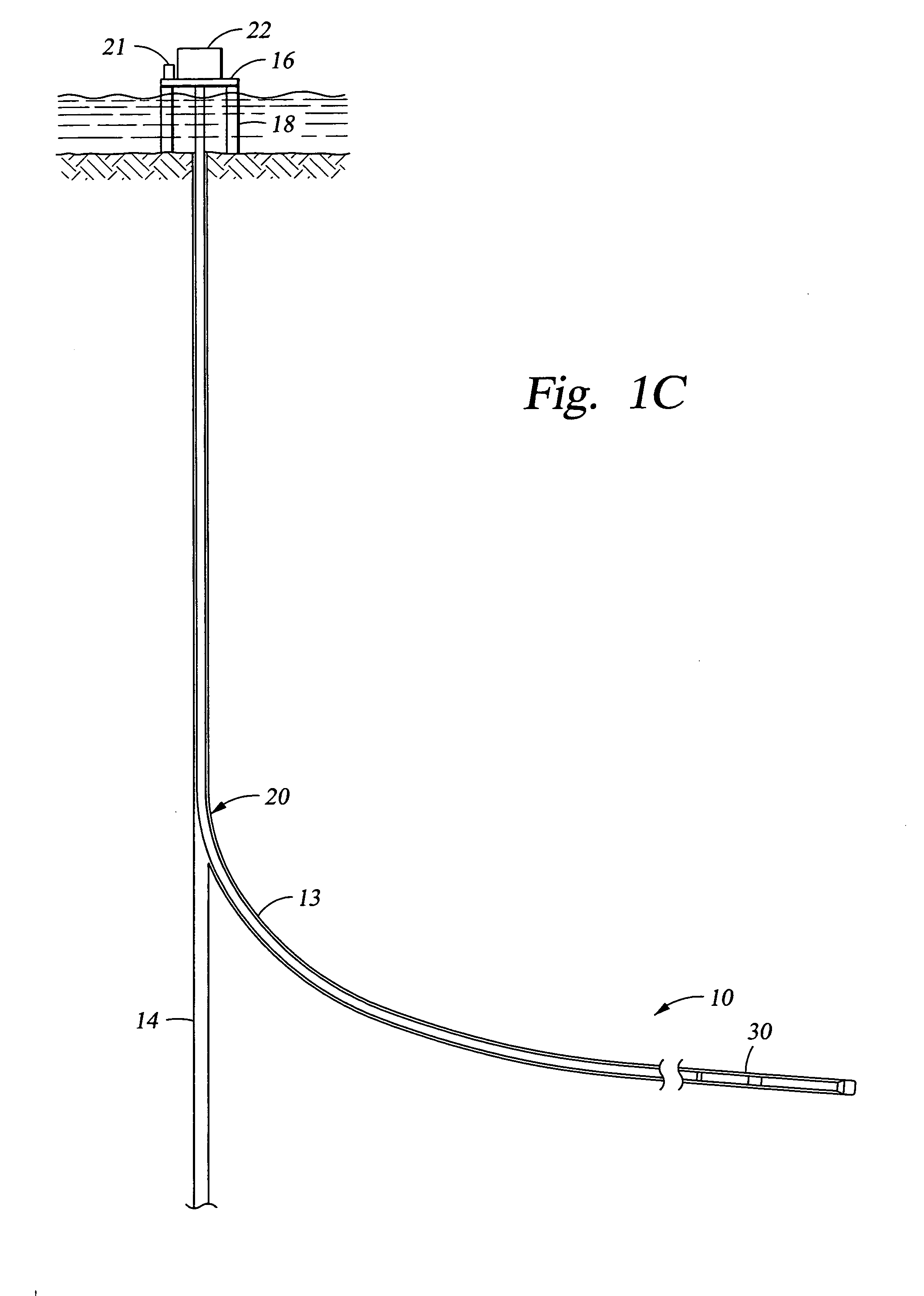Well system
a technology of a well system and a well head is applied in the field of well systems, which can solve the problems of preventing the use of such expensive rigs, requiring as much as $250,000 a day for lease, and requiring approximately $40 million to build off-shore drilling rigs, so as to reduce the cost of expensive and somewhat fragile downhole electronic components, reduce the cost of vibration, and reduce the cost of less expensiv
- Summary
- Abstract
- Description
- Claims
- Application Information
AI Technical Summary
Benefits of technology
Problems solved by technology
Method used
Image
Examples
Embodiment Construction
[0068] The present invention is susceptible to embodiments of different forms. There are shown in the drawings, and herein will be described in detail, specific embodiments of the present invention with the understanding that the present disclosure is to be considered an exemplification of the principles of the invention, and is not intended to limit the invention to that illustrated and described herein.
[0069] The system of the present invention includes a composite coiled tubing having a bottom hole assembly attached. Various embodiments of the present invention provide a number of different constructions of the bottom hole assembly, each of which is used for a downhole operation in one of many different types of wells including a new well, an extended reach well, extending an existing well, a sidetracked well, a deviated borehole, and other types of boreholes. It should be appreciated that the bottom hole assembly may be only a downhole tool for performing an operation downhole ...
PUM
 Login to View More
Login to View More Abstract
Description
Claims
Application Information
 Login to View More
Login to View More - R&D
- Intellectual Property
- Life Sciences
- Materials
- Tech Scout
- Unparalleled Data Quality
- Higher Quality Content
- 60% Fewer Hallucinations
Browse by: Latest US Patents, China's latest patents, Technical Efficacy Thesaurus, Application Domain, Technology Topic, Popular Technical Reports.
© 2025 PatSnap. All rights reserved.Legal|Privacy policy|Modern Slavery Act Transparency Statement|Sitemap|About US| Contact US: help@patsnap.com



